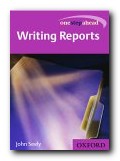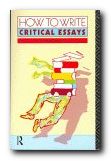say the same thing in fewer words
1. A summary is a shorter version of a longer piece of writing. Summarizing means capturing all the most important parts of the original, and expressing them in a shorter space. The shorter space could be a lot shorter.

2. A summary is sometimes known as a précis, a synopsis, or a paraphrase.
3. In academic writing, summarizing exercises are often set to test your understanding of the original, and your ability to re-state its main purpose.
4. In business writing, you might need to summarize to provide easily-digestible information for customers or clients.
5. Summarizing is also a useful skill when gathering information or doing research.
6. The summary should be expressed – as far as possible – in your own words. It’s not enough to merely copy out parts of the original.
7. The question will usually set a maximum number of words. If not, aim for something like one tenth of the original. [A summary which was half the length of the original would not be a summary.]
8. Read the original, and try to understand its main subject or purpose. Then you might need to read it again to understand it in more detail.
9. Underline or make a marginal note of the main issues. Use a highlighter if this helps.
10. Look up any words or concepts you don’t know, so that you understand the author’s sentences and how they relate to each other.
11. Work through the text to identify its main sections or arguments. These might be expressed as paragraphs or web pages.
12. Remember that the purpose [and definition] of a paragraph is that it deals with one issue or topic.
13. Draw up a list of the topics – or make a diagram. [A simple picture of boxes or a spider diagram can often be helpful.]
14. Write a one or two-sentence account of each section you identify. Focus your attention on the main point. Leave out any illustrative examples.
15. Write a sentence which states the central idea of the original text.
16. Use this as the starting point for writing a paragraph which combines all the points you have made.
17. The final summary should concisely and accurately capture the central meaning of the original.
18. Remember that it must be in your own words. By writing in this way, you help to re-create the meaning of the original in a way which makes sense for you.
Summarizing – Example
Original text
‘At a typical football match we are likely to see players committing deliberate fouls, often behind the referee’s back. They might try to take a throw-in or a free kick from an incorrect but more advantageous positions in defiance of the clearly stated rules of the game. They sometimes challenge the rulings of the referee or linesmen in an offensive way which often deserves exemplary punishment or even sending off. No wonder spectators fight amongst themselves, damage stadiums, or take the law into their own hands by invading the pitch in the hope of affecting the outcome of the match.’ [100 words]
Summary
Unsportsmanklike behaviour by footballers may cause hooliganism among spectators. [9 words]
Some extra tips
Even though notes are only for your own use, they will be more effective if they are recorded clearly and neatly. Good layout will help you to recall and assess material more readily. If in doubt use the following general guidelines.
1. Before you even start, make a note of your source(s). If this is a book, an article, or a journal, write the following information at the head of your notes: Author, title, publisher, publication date, and edition of book.
2. Use loose-leaf A4 paper. This is now the international standard for almost all educational printed matter. Don’t use small notepads. You will find it easier to keep track of your notes if they fit easily alongside your other study materials.
3. Write clearly and leave a space between each note. Don’t try to cram as much as possible onto one page. Keeping the items separate will make them easier to recall. The act of laying out information in this way will cause you to assess the importance of each detail.
4. Use a new page for each set of notes. This will help you to store and identify them later. Keep topics separate, and have them clearly titled and labelled to facilitate easy recall.
5. Write on one side of the page only. Number these pages. Leave the blank sides free for possible future additions, and for any details which may be needed later.
© Roy Johnson 2004
More on How-To
More on literary studies
More on writing skills

 1. In preparation for writing a piece of work, you should take notes from a number of different sources: course materials, set texts, secondary reading, interviews, or tutorials and lectures. You might gather information from radio or television broadcasts, or from experiments and research projects. The notes could also include your own ideas, generated as part of the planning process.
1. In preparation for writing a piece of work, you should take notes from a number of different sources: course materials, set texts, secondary reading, interviews, or tutorials and lectures. You might gather information from radio or television broadcasts, or from experiments and research projects. The notes could also include your own ideas, generated as part of the planning process.

